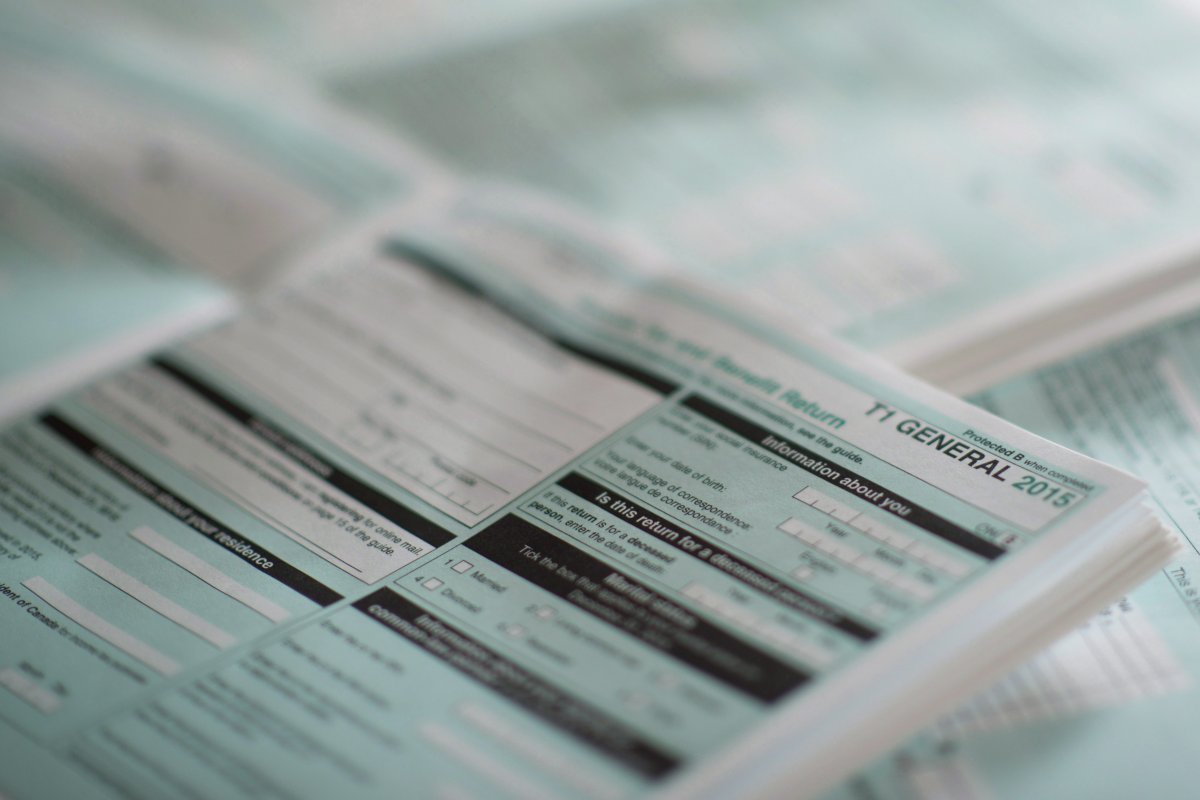As spring approaches in Canada, so does the tax submission deadline. Here’s what you need to know about filing your income taxes for 2016 if you live in Ontario.

READ MORE: Canadian tax deadline: 9 things you need to know
What is the deadline for filing my taxes?
April 30 — If you have a balance owing. The regular filing deadline is April 30, but since that falls on a Sunday this year, the CRA will consider your taxes filed on time as long as they are received or postmarked on or before May 1.
June 15 — If you or your spouse or common-law partner ran a business in 2016. But you still have to pay your taxes by April 30 if you owe money to the government.
READ MORE: Filing your taxes late? Here’s how much you’ll have to pay in penalties
What are the Ontario tax brackets?
Here are the percentages, according to CRA (which are on top of federal tax rates):
- 5.5% on the first $42,201 of taxable income +
- 9.15% on the next $42,203 of taxable income +
- 12.16% on the next $65,596 of taxable income +
- 12.16% on the next $70,000 of taxable income +
- 13.16% on any amount over $220,000 of taxable income
What is the deadline to contribute to my RRSP?
There is no deadline to contribute to your RRSP. But if you want to claim your contribution as a tax deduction against your 2016 income, you must make your contribution in the first 60 days of the year. This year, the deadline was March 1.
READ MORE: Why maximizing your RRSP contribution simply isn’t enough
What do you need before filing your taxes?
Aside from receipts or certificates to prove deductions, claims and RRSP investments, you will need one or more of these documents if you earned income.
- A T1 General 2016 form, which allows you to note your income, credits and deductions.
- If you’re working, a T4, Statement of Remuneration Paid form, which shows how much your employer paid you.
- If you’re retired, a T4A, Statement of Pension, Retirement, Annuity and Other Income, which shows you much you earned in retirement payments.
- If you made money from investing, you’ll need a T5, Statement of Investment Income, which shows items such as dividends, interest from bonds or money you loaned, and much more.
- If you received Employment Insurance (EI), a T4E, Statement of Employment Insurance and Other Benefits.
- If you received worker’s compensation or social assistance, a T5007, Statement of Benefits.
Click here for a list of CRA-related forms and publications.
READ MORE: CRA income tax phishing scam still going strong, police warn
What income tax credits can you apply for in Ontario?
There are multiple tax credits you can apply for, according to the government of Ontario.
The Ontario Trillium Benefit is meant to help people with household expenses. It combines the Ontario Sales Tax Credit, Ontario Energy and Property Tax Credit and the Northern Ontario Energy Credit.
In addition to other credits, there are three specific programs for seniors:
Healthy Homes Renovation Tax Credit – for those 65 and older, up to $1,500 to help make homes safer or more accessible
Senior Homeowners’ Property Tax Grant – for those 64 or older, up to $500 to help with property taxes
Guaranteed Annual Income System – for those 65 or order, up to $83 a month
READ MORE: Canadian taxes: Here’s what will be more expensive in 2017
There are also two specific programs for parents:
- Ontario Children’s Activity Tax Credit – up to $560 for activities like sports or art classes, this is the last scheduled tax year for this credit.
- Ontario Child Benefit – up to $115 a child, per month, until the age of 18.
Students can lower the amount of tax payable by claiming things like tuition and educational expenses, public transit, interest paid on a government student loan, moving expenses, child care and part of your employment income.
Common mistakes and what do you do if you catch an error?
Darryl Hayashi, a Toronto-based chartered accountant, urged people to be cautious if they’re submitting their own returns through a software program.
“You see a lot of people taking shortcuts … be as precise as possible,” Hayashi said.
He encouraged people to double-check the wording of the fields before inputting numbers.
According to CRA, you can amend your return for any of the previous 10 tax years. If you need to change this year’s return, do not file another return but wait until you get your notice of assessment and follow up at that point..
If you have any question or need more information on filing your 2016 income tax, visit the CRA website or you can call officials through any of these phone numbers depending on the nature of your question.
— With files from Jesse Ferreras




Comments